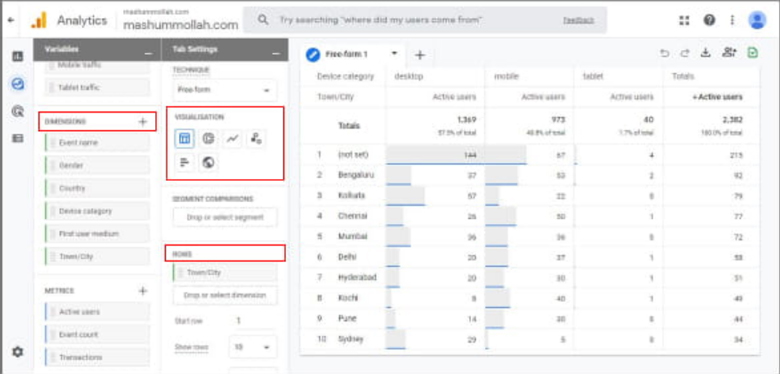- Option: Custom Dimension
- Option: Calculated Metric
- Option: Custom Metric
- Option: Custom Dimension
The right answer: Custom Metric
If you’re new to Google Analytics, you might wonder about this. Custom metrics are great—they help you track the comments users make on a page. Want to know more? Keep reading to learn how to collect user comments on your web page!
Understanding Custom Metrics in Google Analytics?
Digital marketers and E-commerce teams adore Google Analytics Custom Metrics. Wondering why? Well, it gives you deep insights into your online business.
With Google Analytics metrics, you can gather unique website data. And the coolest part? You can create your own default metrics in your analytics account.
Sometimes, getting specific data automatically can be a hassle. That’s when custom metrics come to the rescue. For example, gathering user comments on a web page can be challenging. That’s where the Custom Metrics tool comes in handy.
So, the answer to ‘How do you collect the number of comments users post on a web page?’ is ‘CUSTOM METRICS.’
What Does Custom Dimension Mean?

When we talk about Custom Metrics, it’s clear that the term ‘Custom Dimension’ comes up. These are powerful tools for sending unique data to GA. E-commerce folks and web developers use metrics and dimensions to study webpage info, like login times, page authors, etc. You’ll definitely encounter these two, no matter what you’re learning on Google Analytics.
Custom Metrics and Their Scope: What to Consider?
A common question about Google Analytics Custom Metrics is how they work with different levels. This is also related to Google Dimensions, but let’s focus on what’s relevant.
To understand the scope of custom metrics, check out the following sections:
- User: This value applies to all current and future sessions until the custom dimension becomes inactive or the value changes.
- Session: The value applies to all the actions within a session.
- Hit: The value is specific to the individual action it’s assigned to.
- Product: The value only applies to the particular item it’s set for.
What to Anticipate: Advantages of Using Custom Metrics?

Using custom metrics in Google Analytics can significantly benefit your E-commerce business. There’s not just one advantage but a whole array of benefits waiting for you. Curious to know how? Check out these points:
1. It offers high-quality calculated metrics.
2. You’ll receive accurate reports.
3. Surface-level data analysis becomes possible.
4. You can create precise customer segments.
5. Access a wide range of page feature usage analyses.
The Key to Collecting User Comments: Unveiled
You may understand the critical feature needed to collect user comments on a web page. But why is that?
Well, custom metrics come with distinctive built-in features that enable the creation of tailored reports for your business website. And guess what? These reports are all about flexibility and clarity. That’s why custom metrics are a handy tool for tracking website metrics, including visitor comments.
So, if you aim to extract vital metrics from your web page, trust custom metrics without hesitation.
Frequently Asked Questions:
In Google Analytics, emails are default categorized as ‘source’ under the ‘Medium’ classification.
Begin by logging into Google Analytics. Next, go to Admin and choose the property where you want to add custom metrics. Click on custom definitions and then select custom metrics. Click New Custom Metric. Now, please give it a name.
Pick an integer, time, or currency from the Formatting Type dropdown. Check the active box to gather data. This lets you access metric reports. Uncheck the box if you want to create the metric but keep it inactive.
Lastly, click Create.
In GA, metrics are numerical measurements that provide quantifiable data, linked with custom dimensions.
The Verdict.
By now, you know what you need to gather user comments on a web page. Let’s jump right in and explore this feature to uncover valuable insights about your online business. You’ve gained a good understanding of custom metrics for collecting comments on web pages. Any more questions or thoughts? Feel free to share them below; we’ll gladly help.
